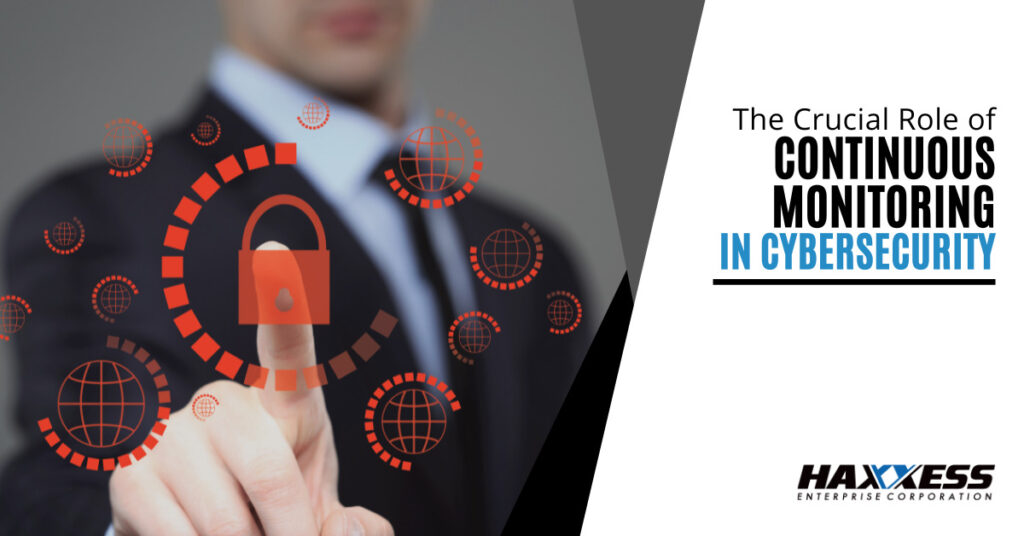
Cyber threats lurk around every corner. From sophisticated malware attacks to phishing scams, businesses face a constant barrage of attempts to breach their defenses.
And what you don’t see coming can hurt you. In 2023, the average monetary loss by Canadian businesses due to cybercrime was $6.94 million. Often, companies are caught off guard by a cyber-attack so they can’t deter the attack in the early stages before major damage is caused.
Just like a well-lit house deters burglars, continuous monitoring is the cornerstone of a robust cybersecurity strategy. It’s the practice of constantly keeping an eye on your IT systems and networks, proactively identifying and addressing vulnerabilities before they can be exploited.
Let’s delve deeper into why continuous monitoring is crucial for safeguarding your organization’s data and reputation.
Cybercriminals are constantly innovating, developing new attack methods and exploiting the latest vulnerabilities. Traditional, point-in-time security measures simply can’t keep up with this relentless pace. Continuous monitoring provides real-time insights into your network activity, allowing you to detect suspicious behavior and potential threats as they emerge.
Imagine a security guard who only patrols a building once a night. A continuous monitoring system is like having vigilant guards patrolling 24/7, equipped with advanced tools to detect even the subtlest signs of trouble.
Cyberattacks are like unexpected storms – the sooner you detect them, the less damage they cause. Continuous monitoring allows you to identify threats in their early stages before they can escalate into full-blown breaches. This enables you to take swift action, such as quarantining infected systems or patching vulnerabilities, minimizing the potential impact on your organization.
Think about it this way: A small leak in your roof might go unnoticed initially. But with continuous monitoring (in the form of a smart leak detection system), you’ll be alerted immediately, allowing you to fix the leak before it causes significant water damage.
Cybercriminals are becoming increasingly sophisticated at hiding their tracks within networks. While traditional security tools focus on known threats, continuous monitoring goes a step further. By analyzing network traffic patterns and user behavior, it can identify anomalies and suspicious activities that might indicate a hidden threat.
Imagine a security guard not just patrolling the perimeter but also checking every nook and cranny of a building for signs of a break-in. Continuous monitoring acts like a vigilant detective, uncovering hidden threats before they can cause harm.
Many industries are subject to stringent data privacy regulations. These regulations often mandate specific security measures, including continuous monitoring practices. By implementing continuous monitoring, you can demonstrate to regulators that you are taking proactive steps to safeguard sensitive data.
Think of it like a fire marshal’s inspection. Continuous monitoring ensures your organization is always “inspection-ready” when it comes to data security compliance.
Unfortunately, even with the best defenses in place, security breaches can still happen. However, continuous monitoring provides valuable insights after the fact. By analyzing log data and incident reports, you can identify weaknesses in your security posture and implement targeted improvements to prevent similar attacks in the future.
Imagine a security guard who reviews security footage after a break-in. Continuous monitoring provides a similar “security film,” allowing you to learn from incidents and improve your defenses.
Now that we understand the importance of continuous monitoring, let’s explore some key elements of a successful strategy:
By consistently monitoring your systems, identifying and addressing threats, and learning from security incidents, you can build a robust cybersecurity posture and keep your organization safe in the ever-evolving digital landscape. Remember, vigilance is key in the fight against cybercrime, and continuous monitoring is your most valuable weapon.
Without a system of continuous monitoring for cybersecurity threats, you’re a sitting duck for cybercrime. Haxxess can help your Northern Ontario business put a comprehensive monitoring solution in place so you can be prepared, aware, and ready to ward off cyber threats.
Contact us today to schedule a free consultation! Call 705-222-8324 or reach out online.